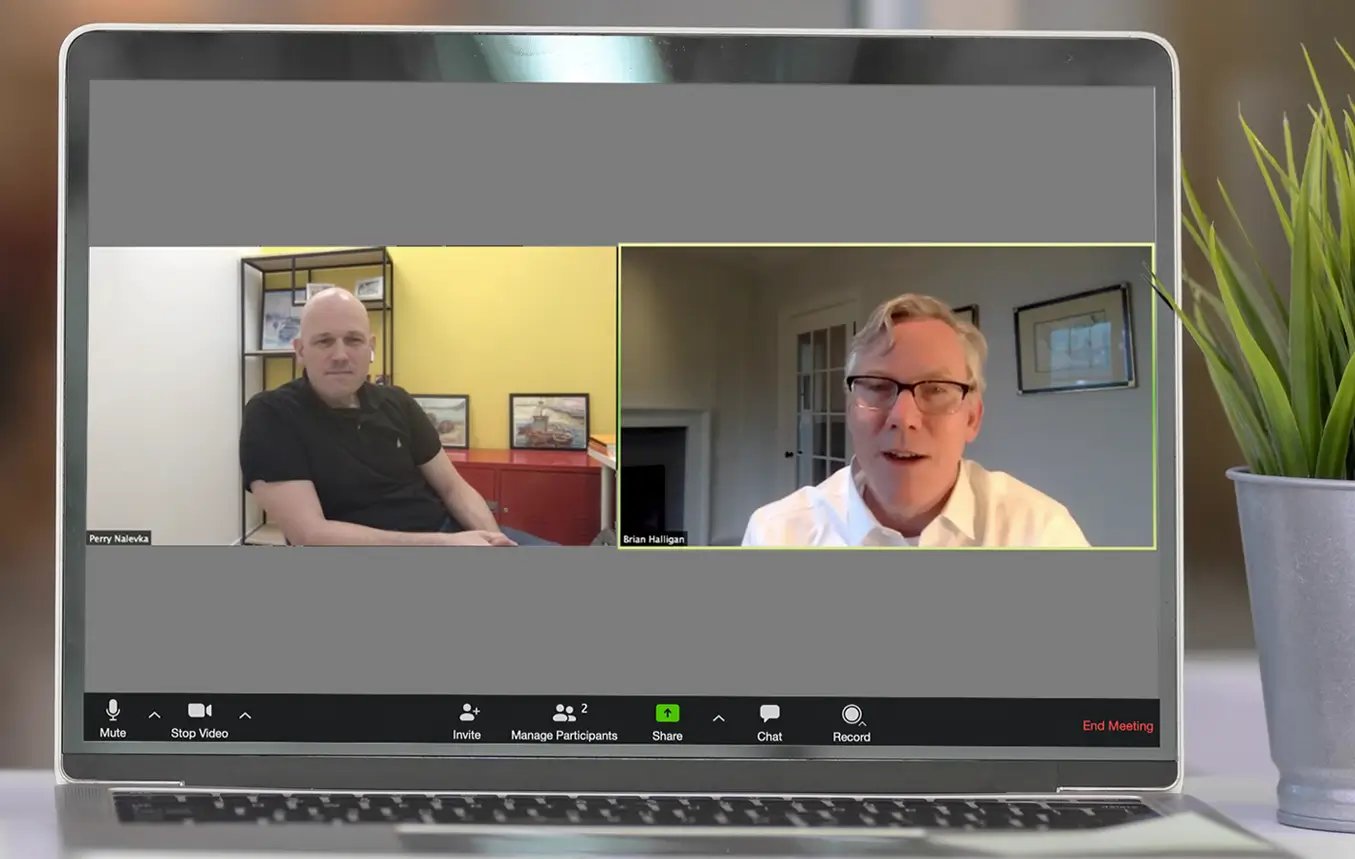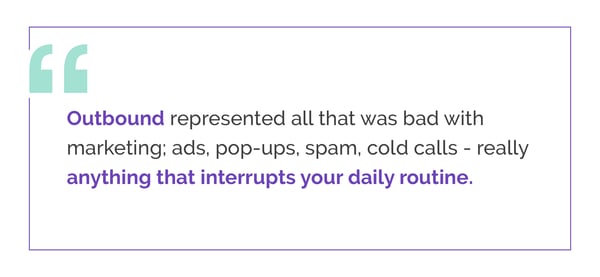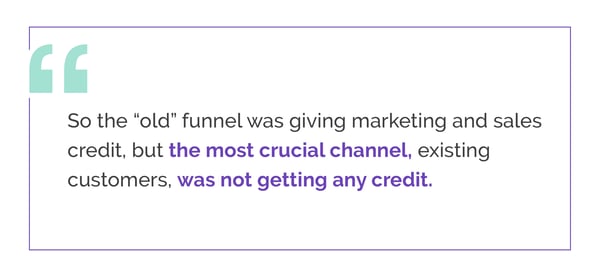
I recently had the pleasure of discussing inbound marketing with Brian Halligan, HubSpot’s CEO and founder at our Virtual HUG. The “Inbound marketing” concept was born when Brian and his co-founder Dharmesh Shah formulated a new approach to existing marketing theories. In the15 years since HubSpot has developed a movement that is followed by marketers globally and annually celebrated at their famous Inbound conference.
In our conversation, Brian revealed that coining the category “inbound” was part of their long game. After all, it would have been much easier to speed Hubspot’s initial growth with the already popular term “internet marketing.” They invested more in marketing the “inbound” term than the HubSpot brand. The bet paid off - by educating tens of thousands of marketers and creating their own category, they won at the "long game."
Playing the Long Game
According to Brian, this strategy isn’t for the faint-hearted, and at Hubspot they had their fair share of failures, one such example is the attempt to introduce “inbound sales” as a new category. If you’re bold enough to try, he recommends having a “bad guy.” For HubSpot and inbound marketing, it was Outbound.  Those of you who attended or heard Brian’s Inbound Keynote in 2018 know about retiring “ye olde funnel” and introducing the flywheel. Brian found that more and more new customers were signing up because of referrals from existing clients.
Those of you who attended or heard Brian’s Inbound Keynote in 2018 know about retiring “ye olde funnel” and introducing the flywheel. Brian found that more and more new customers were signing up because of referrals from existing clients.  As he pondered this, he happened to be re-reading the book Good to Great where the author Jim Collins talks about how great companies think in terms of the flywheel.Today, outbound practices can reconfigure into an “inbound-y” way of doing things. An example of this is “warm” emailing, meaning researching a prospect and reaching out to them with relevant, specific, and timely information.
As he pondered this, he happened to be re-reading the book Good to Great where the author Jim Collins talks about how great companies think in terms of the flywheel.Today, outbound practices can reconfigure into an “inbound-y” way of doing things. An example of this is “warm” emailing, meaning researching a prospect and reaching out to them with relevant, specific, and timely information.
.png?width=383&name=unnamed%20(52).png) HubSpot’s spin on the flywheel is a customer delight mindset, which turns the flywheel faster and accelerates growth. Customer delight can be measured in many ways but, for Brian, the most effective method is through the Net Promoter Score (NPS).
HubSpot’s spin on the flywheel is a customer delight mindset, which turns the flywheel faster and accelerates growth. Customer delight can be measured in many ways but, for Brian, the most effective method is through the Net Promoter Score (NPS).
THE COMPETITIVE EDGE
In 2019’s Inbound keynote, Brian boldly claimed that today’s leading companies aren’t technology disruptors but experience disruptors. If you look at companies like Netflix, Shopify, AirBnB, Casper, Slack, Zoom, and Uber, it’s clear to see that they aren’t delivering a groundbreakingly new product. Still, they are bringing an extremely superior experience.
In business school, Brian was taught that companies needed to develop products that are 10X better than the rest on the market to succeed, but today the customer experience must be 10X better. Another key element for accelerating growth is removing friction from every step in which you engage with potential customers and prospects. Senior executives don’t want to talk to salespeople anymore. They want to learn independently without needing to find time to speak to salespeople. The most successful marketers today share as much information as possible with their prospects to make informed decisions, including product specs, domain education, demos, and most importantly pricing. A great example is, Atlassian, who is selling multi-million dollar deals to enterprises with no salespeople. They allow you to see exactly how much the cost of their product, let you play with it and most incredibly go through the enterprise contract process with no need to speak to anyone.
He continued to talk about the personas most of my customers focus on; the CISO, CCO, and CIO. These personas are introverts by nature, they don’t want to talk to people, they want the content to educate themselves independently and chat support if they have questions. If you don’t have a chatbot on your site, many will be skeptical wondering why you don’t have chat in 2020?
Contrary to popular belief, these people are on the internet, blogs, LinkedIn, and Twitter so you better be there too. They will dive deep when choosing a platform by talking to peers or using a platform like G2.
To truly delight this persona you must provide:
1. A smooth demo
2. Clear pricing
3. An easy purchasing process
The “Inbound Experience” Platform
Towards the end of our talk, Brian and I discussed how HubSpot has transformed from an Inbound Marketing platform to an Inbound Experience platform, incorporating Sales, CRM, Marketing, and Service tools. Now, as a competitor to Oracle, Microsoft, and SFDC, HubSpot’s advantage is that they have written every line of code from the bottom up, not through company acquisitions. HubSpot, like Apple, owns the entire experience so that they can delight their customers.
Finally, we examined Hubspot’s best-kept secret, its CMS. The CMS market is r dominated by open-source products like Wordpress and Drupal. But when Brian saw what Wix was doing at the bottom end of the market, he realized that a similar product was needed for the middle and top end. This drove HubSpot to build its own CMS, which is easy enough for marketers to use yet secure and robust enough to create the websites HubSpot customers require.
The Inbound Marketing Experience
Throughout the conversation, I was repeatedly struck by Hubspot’s unwavering ability to keep its focus razo- sharp on the customer experience.
Inbound marketing is all about focusing on what the prospective customer is looking for. Hubspot, and many others, are now taking this beyond marketing, with a 360-degree approach to the entire customer experience.
I believe that, before long, the term “Experience Disruptors” will be as much part of our vocabulary as “Inbound Marketing”. And we should all be taking this on as part of our long game.

by Perry Nalevka on June 04, 2020
CEO of Penguin Strategies





